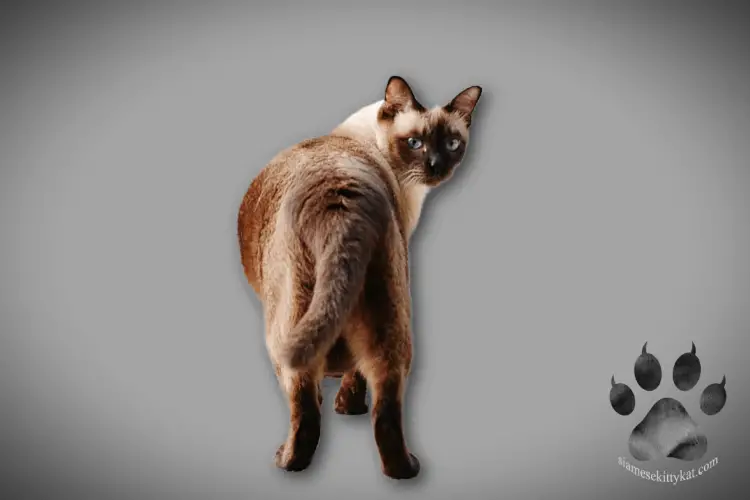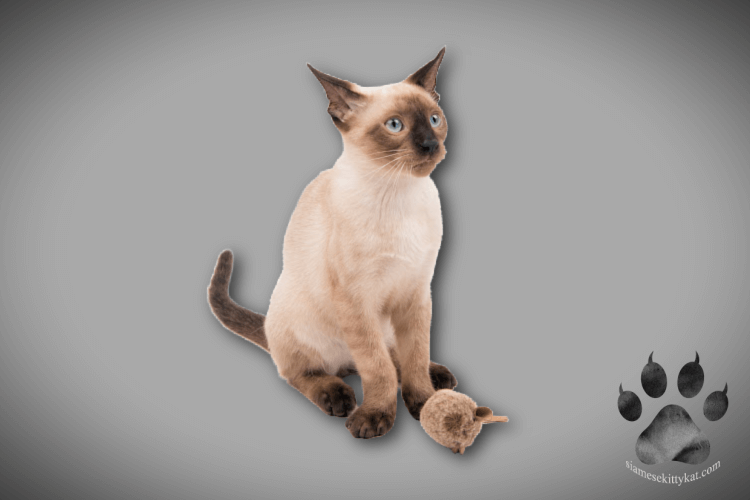Cat tails have such a fascinating aura about them. They can swish, twitch, curl, bend, and quiver. This makes us wonder if they move on their own or whenever they need or feel like it.
One of the things that intrigued me when I was a kid was whether cats had any control over their tails. Are cats conscious of the movement of their tails, or do the tails wag subconsciously?
It’s time to answer this most frequently asked question. Can Siamese cats control the movement of their tails?
Siamese cats’ tails can move voluntarily and involuntarily. Their tails are an extension of their spines, so they can move them as they please. They also have uncontrollable tail movements. Their nervous system triggers these sudden tail movements.
All cats, especially healthy ones, are aware of their tails. They know how their tails move. They have fine control over their tails from the tip to the base.
Siamese cats can move their tails on purpose. Their tails can also wag unconsciously. These wagging tails may be baffling, but they serve a purpose beyond aesthetics! Our cats’ tails have essential functions; how they move reveals a lot about them.
This article will discuss the causative factors of cat tail movements. It will also go over the anatomy and functions of the cat’s tail.
Do Siamese Cats’ Tails Move Voluntarily?
Siamese cats can move their tails on their own accord. Most of their tail movements are voluntary. These movements have significant purposes.
Cats communicate their emotions, current focus, and mood by moving their tails. Yes, those tail wags are often wholly intentional!
Siamese cats have control of their tails because:
1. Your cat’s tail has motor nerves and sensory nerves.
Your Siamese cat’s tail has the following:
These nerves send neural signals to the muscle tissues that move your cat’s tail.
Your Siamese cat’s brain is where the action starts when deciding what his tail should be doing.
2. Your cat’s tail is a part of his backbone.
Siamese cats can control their tails because they are extensions of their spine.
Your cat’s spine has five distinct vertebral regions. These regions are the following:
Your Siamese cat can move his tail because he can move his lower back.
Also, your cat’s spine gets injured if his tail gets trapped or caught by a closing door. This could signify a spinal injury in his lower back if your cat’s tail is weak and does not move much.
3. Ten percent of your cat’s bones are in his tail.
Cats, on average, have 230 bones. Approximately 10% of a Siamese cat’s bones are in his tail.
This indicates your cat’s tail has enough locomotion capability and propulsion power. This also proves that his tail is functional for jumping and balancing purposes.
What Do Cat Tail Movements Mean?

Siamese cats use their tail movements to express their emotions, focus, and mood.
These are some of the most common tail gestures and their meanings:
A slowly-wagging tail means your Siamese cat decided to focus on something. It could also mean he is ready to pounce.
A straight-up tail slightly curving at the tip suggests your cat is glad to meet and say hello to you. This is your kitty’s way of telling you that he is ready to interact with you in a friendly way.
A flicking tail, lashing back and forth, implies your cat feels uncomfortable. It could also mean your kitty feels agitated or anxious.
A tail tucked under his body indicates he feels anxious or disoriented. Also, tucking his tail may mean showing his submissive stance.
Do Siamese Cats’ Tails Move Involuntarily?
Siamese cats have involuntary tail movements because of their righting reflex.
Your cat controls most of the action of his tail, but it may move on its own because of the following:
1. Your cat has a righting reflex.
Your Siamese cat’s tail can move on its own like any other part of his body. Your cat’s tail flicks when he is relaxing or sleeping, and there is no reason for it.
The same reflex that causes your hands to shake when shocked may cause your cat’s tail to twitch. This sudden tail movement happens because of how your cat’s body and nerves work.
Also, your cat’s natural reaction when he thinks his tail is about to get trapped is to pull away. This sudden move, though, can hurt.
Your cat’s tail loosens itself against the rest of his vertebrae with this sudden move. This situation feels uncomfortable, which leads to more uncontrollable tail movements.
2. Your cat is dreaming.
Siamese cats have vivid dreams when they reach the rapid-eye movement or deep sleep phase. Their tails are likely to move during this time.
You may even have observed that your cat’s tail curls and twitches while sleeping. It’s your cat’s way of immersing himself in the events of his strange or wonderful dream.
3. He has an injury in the spine or lower back
An injury that affects your cat’s lower back can cause unintentional tail movements.
Likewise, an injury to your cat’s tail can also cause nerve damage in his spinal cord. More erratic tail movements follow as a result.
Your cat’s tail is less likely to move involuntarily if the injury is minor and has already healed.
Do Siamese Cats Feel Through Their Tails?

Siamese cats are aware of their tails. Their tails have a network of nerves that allow them to feel objects and pain. Your cat’s tail has sensory nerves, which explains why he dislikes it when you touch it.
These nerves at the base and tip of his tail are direct links to his spinal cord. Also, they connect to the nerve cells that regulate the urinary system. Your cat can feel his tail because of these connections.
Why Do Cats Need Their Tails?
Cats use their tails to balance themselves. They also use tail gestures or positions to convey how they feel.
Your cat’s tail is important because it helps him balance. His tail is a counterpoint when he walks and runs, especially in tight spaces. His tail also helps your cat stay balanced when he tries to catch or jump on prey.
How your cat moves his tail is a big part of how he stays balanced and shows how he expresses himself. Your Siamese cat relies so much on his tail for support.
Thanks for reading!
Want to immerse yourself more in the captivating world of Siamese cats? I’ve got all the information you need from their distinct color points to their fun personalities: Siamese Cats: Unique Features and Personality
